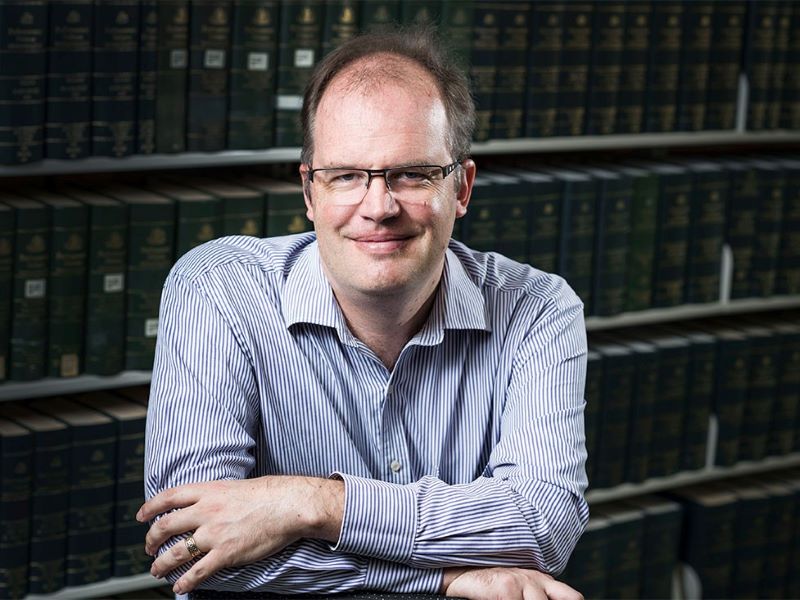Gambling and alcohol giants beat out Australia’s national science agency and universities in patent and trademark filings last year, as local filings fell and the nation remained overwhelmingly a “net importer” of technology.
Experts say the latest drop in local patent filings is due to a correction from record levels driven by COVID-19 and a law change last year. But a persistent reliance on foreign technological innovation has again drawn calls for a new approach.
New data showing the link between holding a patent and productivity, along with an Industry minister bullish on Australian ‘know-how’ is adding to the urgency.

Patents allow the holder to exclusively exploit their invention and are often used as a measure of overall innovation. It is an imperfect measure but a useful one, according to experts.
For much of the last decade, total patent filings in Australia have been steady. That was until 2021, when a law change incentivised applicants to bring forward applications. Along with the pandemic driving more filings in health technologies, the law change resulted in a record year of filings with 32,409.
Patent filings fell only slightly last year, but this was thanks largely to overseas filers. There was a near-17 per cent drop in filings from domestic applicants.
It is not necessarily cause for concern yet, according to IP Australia, which collates the data in an annual report and describes the drop in local filings as a “correction” on the record year.
“Data over coming years will show whether resident applications have reverted to the negative growth trend observed over 2018 to 2020,” the latest report said.
But zoom out and consider who is filing the patents and there is a bigger problem, according to Melbourne Law School chair of intellectual property, Professor Andrew Christie.
The latest report also reveals applications by Australian applicants account for only 7.7 per cent of total filings in 2022. In other words, more than nine in every 10 patents filed in Australia last year were from an overseas applicant.
The share of non-resident patent filings in Australia is among the highest in the world.
On one hand it shows foreign organisations are willing to access the Australian market and protect their technology here, Professor Christie said. But ideally, “we would have a stronger innovation economy domestically” which would be represented in a greater share of domestic filings.
The latest report shows that on average, businesses that register IP rights are more productive than other businesses, with up to 30 per cent higher productivity with a patent or design right. Additional trade mark filings are also linked to an 8 per cent increase in revenue per employee. Small and medium Australian organisations holding a patent tend to pay their employees more and hold on to them for longer.
Australia’s IP holding businesses have an outsized impact on GDP, employment, R&D, and exports.
“I think policymakers would love to see an increase over time of patent filings by Australian entities. And certainly we’d love to see an increase of that relative to foreigners,” Professor Christie told InnovationAus.com.
“Because it would be suggesting that technological innovative activity domestically by Australian entities is actually on the increase.”
But the data has persistently shown the opposite, he says.
The trend away from local R&D and the patents it produces started decades earlier when much of the private sector “removed from itself responsibility for engaging in serious research and development”.

According to Professor Christie, innovation was left largely to publicly funded groups like the CSIRO and universities, with very little coming from the major private sector entities like manufacturers and pharmaceutical companies that typically engage in heavy research and development outside Australia.
In the US, the equation is reversed, with the private sector leading patent applications, he said.
“It is somewhat peculiar to Australia, because the private sector over the many decades has just taken itself out of that game. They just don’t do it.”
Take Telstra Research Laboratories, for example. Established in 1923 as part of the postal department, for decades it employed hundreds of engineers and researchers helping to make breakthroughs in things like radar technologies and the cochlear ear implant.
After Telstra was privatised, the lab was downsized before being closed altogether in 2006, with the telco opting to rely on vendor partners for more of its R&D.
“Other big Australian entities used to have research laboratories and the like. They just don’t anymore,” Professor Christie said.
“So research of that type is very largely conducted in the public sector. And that’s what this [patent] data has been reflecting for decades, not just now.”
It is not necessarily that large Australian enterprises don’t want to technologically innovate, but many don’t have to, he explained.
“If you think about the major enterprises in Australia, they’re mostly either service enterprises, which tend not to engage in technological development, or they’re in industry sectors where their advantage doesn’t have to come from technological development – it comes from other things like access to natural resources [or] scale.”
Based on filing and trademark applications the biggest innovators and brand protectors in Australia are again gaming and alcohol giants, respectively.
Aristocrat Technologies filed the most patents in Australia among local organisations. With 69 filings, the gaming giant beat out the CSIRO (51), Monash University (24), renewable energy inventor Thanh Tri Lam (24) and software giant Canva (23).
Endeavour Group limited (116) beat out Aristocrat (112) for the most trademark filings, followed by Pharmacor (63) and Sportsbet (44).
By this measure, the prominence of gambling and drinking organisations is “quite striking” and would surprise most Australians, who would probably prefer to see health and education organisations atop the lists, Professor Christie said.
“I do think that’s quite worrying. It tells me a) what’s important in the marketplace domestically and b) where people are putting their innovative efforts.”
Deakin University IP expert Dr Tyrone Berger is not surprised at the return of Aristocrat either.
“There could be several factors: they are an innovative company looking to protect their IP, or on closer examination, they could be ‘evergreening’,” he told InnovationAus.com
“Put simply, evergreening is extending the scope of protection on their existing IP.”
Filing dozens of patents every year suits the gaming giant rather than it necessarily being the most innovative company, he says, because it is “churning out hundreds of gaming machines each year”.
“With each new machine or ‘new look’ the company may take the view it needs to protect its IP against copying or competitors in the same space.”
Aristocrat’s dominance of local filings is easily dwarfed by international filers like electronics giants LG and large tech companies IBM and Huawei, each with more than 180 individual patents filed last year – nearly three times as many as Aristocrat.
Australia is still a massive “net importer” of technology, Dr Berger said.
The Albanese government wants to change this by encouraging more domestic innovation and, consequently, patenting by local organisations.
“Australians should value our know-how – it’s the platform that supports the creation and growth of businesses and jobs. It can also play a critical part in addressing Australia’s key economic challenges,” Industry and Science minister Ed Husic said in the IP Australia report foreword.”
The minister, who campaigned on and continues to advocate for better utilising Australian know-how, is seeking to push the nation “from being a net importer to a net exporter of IP,” according to Queensland University of Technology professor of intellectual property and innovation law, Matthew Rimmer.
“[Minister] Husic is very interested in Australia making advances in breakthrough technologies – such as robotics, advanced manufacturing, quantum computing, etc,” he told InnovationAus.com.
“At the same time, Husic has been conscious of some of the dangers of over-protection of IP rights – and domination of IP rights by overseas companies.
“He is seeking to really push Australia from being a net importer to a net exporter of IP. If you look at patent filings currently, there is still a huge preponderance of filings by foreign entities.”

The new government has reportedly dropped the Morrison government’s patent box scheme from its legislative agenda. The Coalition policy – which was never legislated – would have given a tax break for income derived from medical and biotech intellectual property that came from local research.
While supported by industry groups, some experts had questioned whether tinkering with tax support would have a substantive impact or merely encourage more opportunistic filings.
The government is also facing calls for the reintroduction of innovation patents to help local SMEs protect their inventions just a year after the previous scheme was scrapped.
Professor Christie said the patent system in Australia is largely sound and a bigger issue than IP law changes or tax incentives is Australia’s innovation culture.
“What we really want is a change in the way Australian private sector businesses think about what their role is, and that does seem to me to include having to commit to invest in in technological innovation as well as just branding innovation, rather than leave it to others overseas.”
Encouraged by the new minister’s vision and statements, Professor Christie said a change in culture at the political level could have real impacts elsewhere.
“It’s nice to have innovation being allowed to be spoken about again in policy language, after a few years where it wasn’t allowed to be said. So that’s an example of political culture changing, and political culture can lead societal culture, if you like, and even business culture,” Professor Christie told InnovationAus.com.
“So I’d love to see us all become focused once more on being creative and innovative.
“And particularly in the private sector. Don’t leave it all to the universities and CSIRO and the research institutes, let’s get the private sector more involved as well.
“It’s important. Risk brings opportunity. Yes, innovation is risky, but also that’s where you get a lot of growth from too. And we should be doing more of that.”
Do you know more? Contact James Riley via Email.
